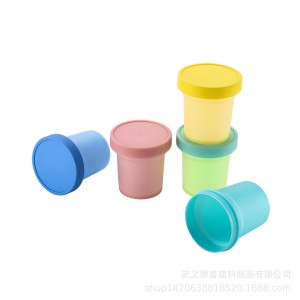With the increase in environmental awareness, the reuse of plastic waste has become an important topic. However, some unscrupulous businesses may use waste materials to make plastic water cups, posing health and environmental risks to consumers. This article will introduce several ways to quickly identify plastic water bottles produced from waste materials to help you make an informed purchasing decision.
1. Observe the appearance quality: Plastic water cups made from waste materials may show some defects in appearance, such as bubbles, uneven color and uneven surface. The quality may be inferior compared to a regular production water bottle because the characteristics of the waste material may cause instability in the manufacturing process.
2. Smell test: Waste materials may contain undesirable chemicals, so using your sense of smell to test the water cup for unusual smells is one way to do it. If your plastic water bottle has an unusual or pungent odor, it’s likely that it was made from scrap materials.
3. Bending and deformation test: Waste materials may cause the strength and stability of the plastic water cup to decrease. Try bending the cup gently. If it deforms or develops cracks, it may be made from scrap material. A normal plastic water cup should have a certain degree of elasticity and not immediately deform.
4. Thermal stability test: Waste materials may cause the thermal stability of plastic materials to decrease. You can test the heat resistance of your water bottle with hot water or hot drinks with a little safety. If your water cup deforms, changes color or smells when exposed to hot water, it may have been made from scrap materials.
5. Look for certifications and labels: Regularly produced plastic water cups usually have relevant certifications and labels, such as food-grade certification, environmental certification, etc. Before purchasing, you can carefully check whether there is a relevant certification mark on the water bottle, which can provide some assurance.
6. Buy a reputable brand: Choosing to buy a plastic water bottle from a reputable brand can reduce the risk of buying a water bottle made from waste materials. Well-known brands usually have stricter quality control and supervision, reducing the possibility of using waste materials in production.
To sum up, you can relatively quickly identify whether a plastic water bottle is likely to be produced from waste by looking at the appearance quality, smell testing, bending and deformation testing, thermal stability testing, looking for certifications and logos, and choosing a reputable brand. . To protect your own health and the health of the environment, it is crucial to make informed purchasing decisions.
Post time: Nov-14-2023
